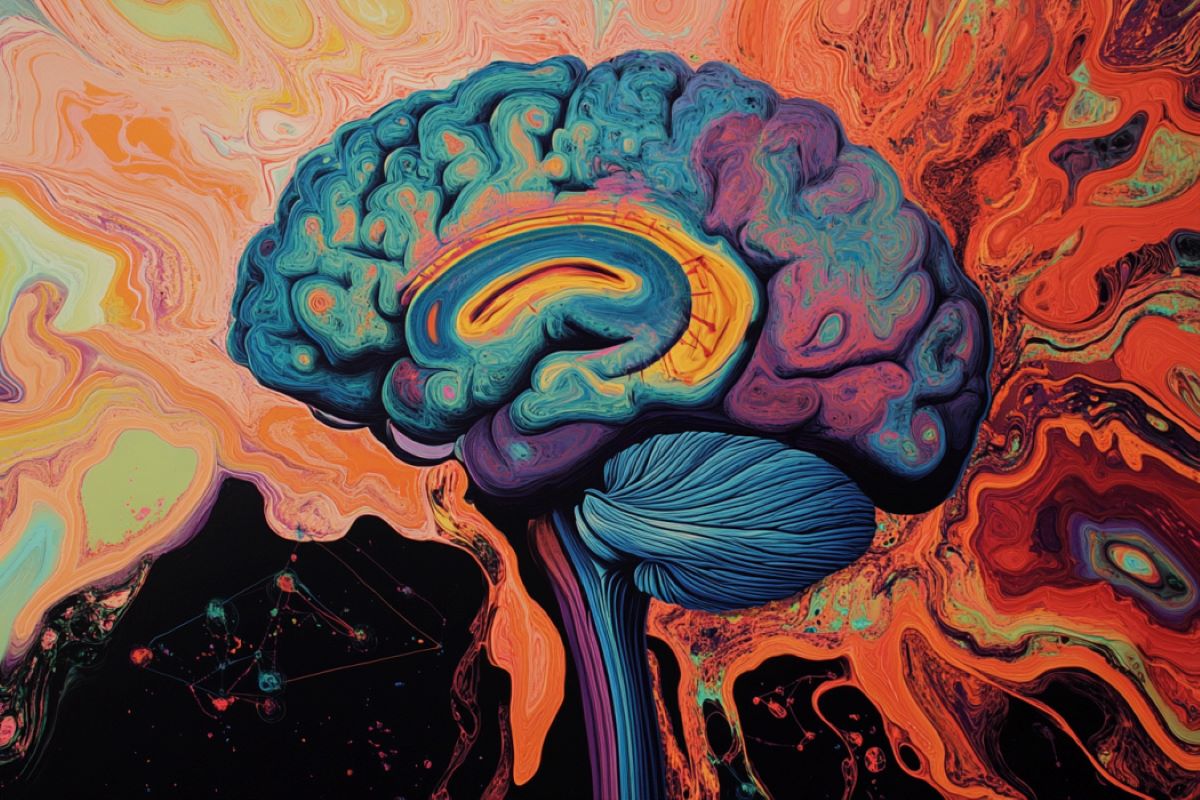Summary: The psychedelic DOI, a compound similar to LSD, reduced anxiety in mice by activating specific brain cells called fast-spiking interneurons. These neurons silence nearby cells in the ventral hippocampus, a region linked to emotion and memory.
By uncovering this mechanism, the study opens the door to designing new treatments that target anxiety without triggering hallucinations, a hallmark of many psychedelics.
Key Facts:
- DOI activates neurons that reduce anxiety in the brain’s ventral hippocampus.
- Fast-spiking interneurons silence other cells, contributing to anxiety relief.
- The study suggests it’s possible to design psychedelic-inspired drugs without hallucinations.
Source: Cornell University
A classic psychedelic, similar to LSD, psilocybin and mescalin, was found to activate a cell type in the brain that silences other neighboring neurons, a result that provides insight into how such drugs reduce anxiety, according to a new study.
The findings show the psychedelic DOI (2,5-dimethoxy-4-iodoamphetamine) lessened anxiety in mice and rats while activating the ventral hippocampus and so-called fast-spiking interneurons there.
“It hasn’t been known what brain areas and cell types are involved when psychedelics suppress anxiety,” said Alex Kwan, associate professor of biomedical engineering at Cornell University and senior author of the study, which published today in the journal Neuron.
“The idea is that if we know the neurobiology involved, we can design some better drug that would target these pathways.”
“The work provides an understanding of the cellular trigger for the psychedelic-induced relief of anxiety,” said Vidita Vaidya, senior professor of biological sciences at the Tata Institute of Fundamental Research in Mumbai, and the paper’s corresponding author.
The pathway in the ventral hippocampus – a brain structure involved in social memory, emotion and affect – does not appear to cause the hallucinations that are a hallmark of DOI, suggesting that some of the therapeutic effects of psychedelics – including reducing PTSD, depression and anxiety – may be isolated within discrete brain circuits, Vaidya said.
“That opens up the possibility to design psychedelic inspired drugs that target anxiety without evoking potent hallucinations,” she added.
The study builds on earlier research that identified abnormal hyperactivity in the ventral hippocampus when an animal is anxious, particularly neurons that communicate with the amygdala, the major processing center for emotions.
“There’s a hint that in the anxiety state, these cells are active, and maybe the drug works by then silencing some of these,” Kwan said.
About this psychopharmacology and anxiety research news
Author: Becka Bowyer
Source: Cornell University
Contact: Becka Bowyer – Cornell University
Image: The image is credited to Neuroscience News
Original Research: Open access.
“Ventral hippocampal parvalbumin interneurons gate the acute anxiolytic action of the serotonergic psychedelic DOI” by Alex Kwan et al. Neuron
Abstract
Ventral hippocampal parvalbumin interneurons gate the acute anxiolytic action of the serotonergic psychedelic DOI
There has been a recent renewal of interest in the therapeutic potential of serotonergic psychedelics.
Here, we uncover the essential role of ventral hippocampus (vHpc) GABAergic interneurons in the anxiolytic effect evoked by the serotonergic psychedelic 2,5-dimethoxy-4-iodoamphetamine (DOI).
Integrating anatomical, pharmacological, and genetic approaches, we show that 5-HT2A receptors in the CA1/subiculum (CA1/sub) region of the vHpc are required for the anxiolytic action of DOI. In vivo electrophysiology and opto-tagging experiments indicate that DOI enhances the firing rate of hippocampal fast-spiking parvalbumin (PV)-positive interneurons, most of which express the 5-HT2A receptors.
Restoration of 5-HT2A receptors in PV-positive interneurons in a loss-of-function background reinstated the anxiolytic responses evoked by DOI in the vHpc CA1/sub region.
Collectively, our results localize the acute anxiolytic action of a serotonergic psychedelic to 5-HT2A receptors in the ventral hippocampus and specifically identify PV-positive fast-spiking cells as a cellular trigger for the psychedelic-induced relief of anxiety-like behavior.







